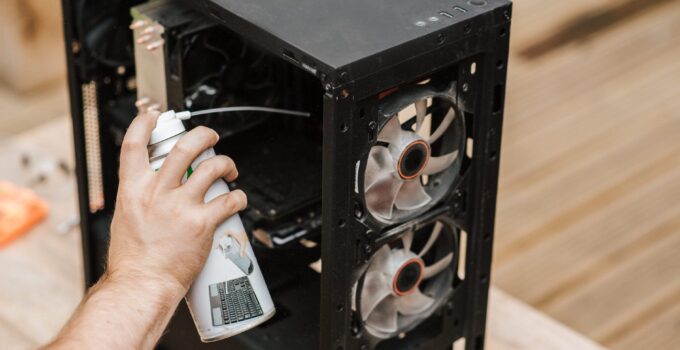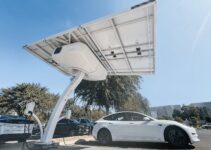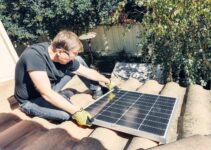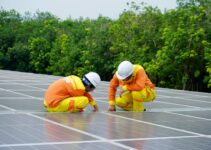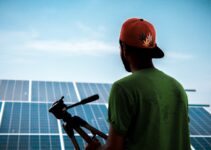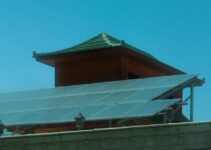Solar panels are a popular choice for renewable energy, but many people wonder if they can still produce electricity when they are not in direct sunlight.
In this article, we will shed light on the potential of solar panels in the shade and explore their efficiency, maximizing output, shade-tolerant options, challenges of installation, and how to harness solar energy even in shady areas.
The Impact of Shade on Solar Panel Performance
Shade can have a significant impact on the performance of solar panels. When a solar panel is partially or fully shaded, it obstructs the flow of sunlight, reducing the amount of energy that can be converted into electricity.
This is because solar panels are made up of multiple interconnected solar cells, and when one cell is shaded, it can create a bottleneck effect, limiting the overall output of the panel.
Shade can come from various sources, such as nearby buildings, trees, or even dust and debris on the surface of the solar panels. It’s important to understand that even a small amount of shade can have a noticeable impact on the performance of solar panels.
The Efficiency of Solar Panels in Partial Shade
While solar panels in full shade may not produce any electricity, panels in partial shade can still generate some power. The efficiency of solar panels in partial shade depends on the design and technology of the panels themselves.
Newer solar panel technologies, such as bypass diodes, can help mitigate the impact of shade. Bypass diodes allow the electricity to bypass the shaded portion of the panel, enabling the remaining unshaded cells to produce electricity. This technology can significantly improve the efficiency of solar panels in partial shade.
It’s worth noting that not all solar panels are created equal when it comes to shade tolerance. Some panels are specifically designed to perform better in shaded conditions and may have higher efficiency ratings compared to standard panels.
Maximizing Solar Panel Output in Shaded Areas
To maximize the output of solar panels in shaded areas, there are several strategies that can be employed:
- Optimize panel placement: When installing solar panels, it’s crucial to carefully consider their placement to minimize shade interference. Positioning panels on areas of the roof or property with maximum sunlight exposure can help optimize their output.
- Trim or remove nearby trees: Trees are a common source of shade for solar panels. If possible, consider trimming or removing trees that cast shade on the panels to improve their performance.
- Clean panels regularly: Dust, dirt, and debris on the surface of solar panels can further reduce their efficiency, especially when combined with shade. Regularly cleaning the panels can help maximize their output.
- Invest in shade-tolerant solar panels: As mentioned earlier, some solar panels are specifically designed to perform better in shaded conditions. Investing in shade-tolerant panels can help maximize the output in areas with limited sunlight.
- Consider micro-inverters or power optimizers: Micro-inverters or power optimizers are devices that can be installed on individual solar panels to optimize their performance, especially in shaded conditions. These devices can improve the overall efficiency of the solar panel system.
Unveiling the Secrets of Shade-Tolerant Solar Panels
Shade-tolerant solar panels are designed with advanced technologies and features to minimize the impact of shade on their performance. These panels typically have bypass diodes that allow the electricity to flow around the shaded cells, improving overall efficiency.
In addition to bypass diodes, shade-tolerant panels may also have other features such as improved cell design, anti-reflective coatings, and enhanced heat dissipation mechanisms. These features help maximize the output of the panels, even in partially shaded conditions.
When considering shade-tolerant solar panels, it’s essential to consult with a reputable solar panel installer or supplier who can provide expert advice on the best options for your specific needs and location.
Overcoming the Challenges of Installing Solar Panels in Shady Locations
Installing solar panels in shady locations can pose some challenges, but with proper planning and strategies, these challenges can be overcome:
- Conduct a shade analysis: Before installing solar panels, it’s crucial to conduct a shade analysis of the property to determine the areas that receive the most sunlight and areas that are prone to shade. This analysis can help optimize the panel placement and identify potential shade sources that can be addressed.
- Consider alternative mounting options: In some cases, installing solar panels on the roof may not be the most viable option due to shade. Ground-mounted systems or solar canopies can be considered as alternatives to maximize sunlight exposure.
- Explore battery storage: If shade is a significant concern, investing in battery storage can help store excess energy generated during sunny periods. This stored energy can then be used during shaded periods, ensuring a continuous power supply.
- Consult with solar experts: Overcoming the challenges of installing solar panels in shady locations may require expert advice. Consulting with solar experts can help identify the most effective solutions and ensure a successful installation.
Harnessing the Power of Solar Energy Even in the Shade
Despite the challenges and reduced efficiency, it is still possible to harness the power of solar energy even in the shade. By implementing the strategies mentioned above, optimizing panel placement, investing in shade-tolerant panels, and considering alternative mounting options, you can still benefit from solar energy, even in shaded areas.
Related FAQs
Q: Can solar panels generate electricity in full shade?
A: Solar panels do not generate electricity in full shade. Shade obstructs the flow of sunlight, reducing the energy that can be converted into electricity. Panels require direct sunlight to produce electricity.
Q: Do shade-tolerant solar panels have lower efficiency than standard panels?
A: Shade-tolerant solar panels are specifically designed to perform better in shaded conditions. While their efficiency may vary depending on the specific panel, they are typically designed to minimize the impact of shade and can have similar or higher efficiency ratings compared to standard panels.
Q: How much does shade affect solar panel efficiency?
A: Even a small amount of shade can have a noticeable impact on solar panel performance. Shade can create a bottleneck effect, reducing the overall output of the panel. It’s important to minimize shade interference to maximize the efficiency of solar panels.
Q: Can I install solar panels in shaded areas?
A: While installing solar panels in shaded areas is possible, it presents challenges and reduced efficiency. However, by implementing strategies such as optimizing panel placement, investing in shade-tolerant panels, and considering alternative mounting options, you can still harness the power of solar energy in shaded locations.
Expert Advice
Consulting with solar experts is crucial when considering solar panels in shaded areas. They can assess your specific situation, provide personalized recommendations, and ensure the installation is optimized for maximum efficiency. Additionally, they can help you navigate through the various shade-tolerant panel options available in the market.
